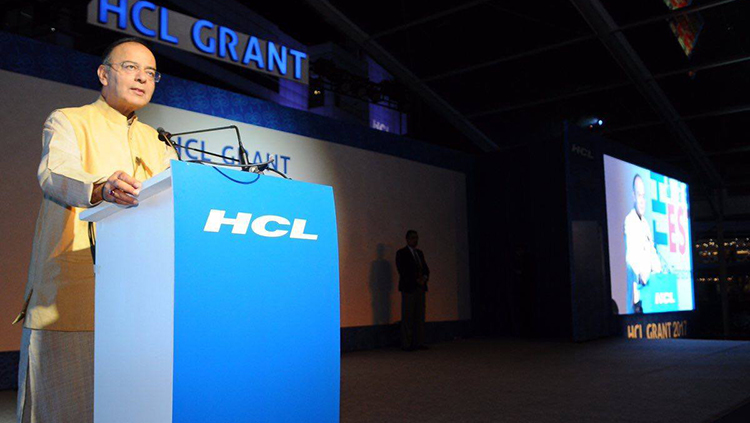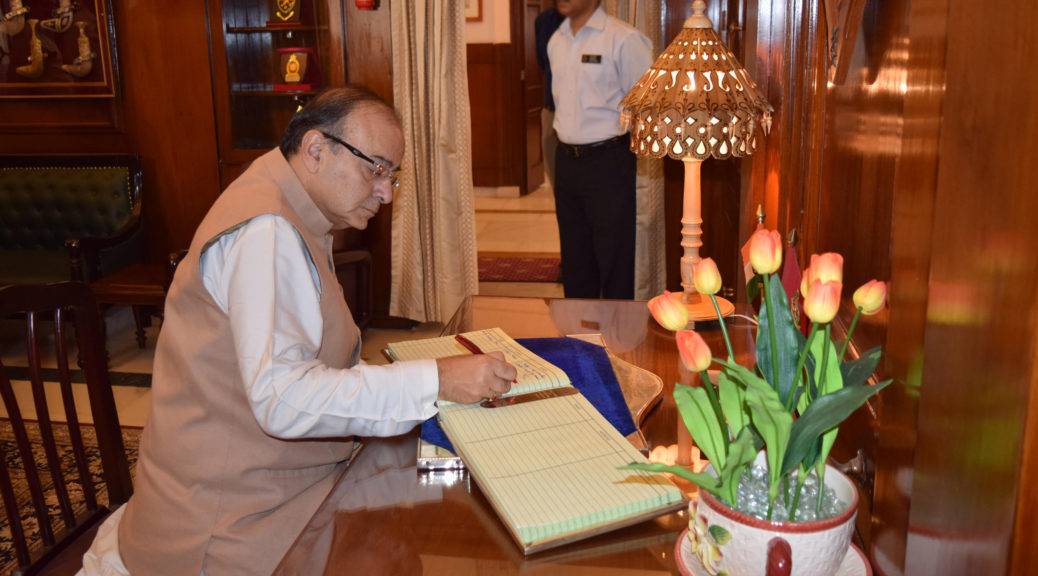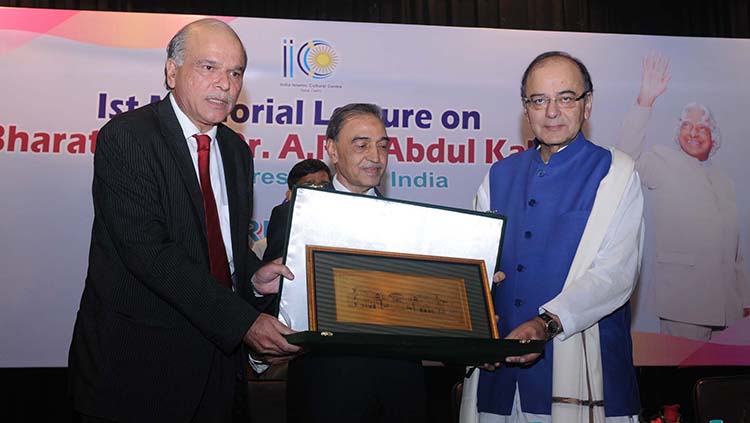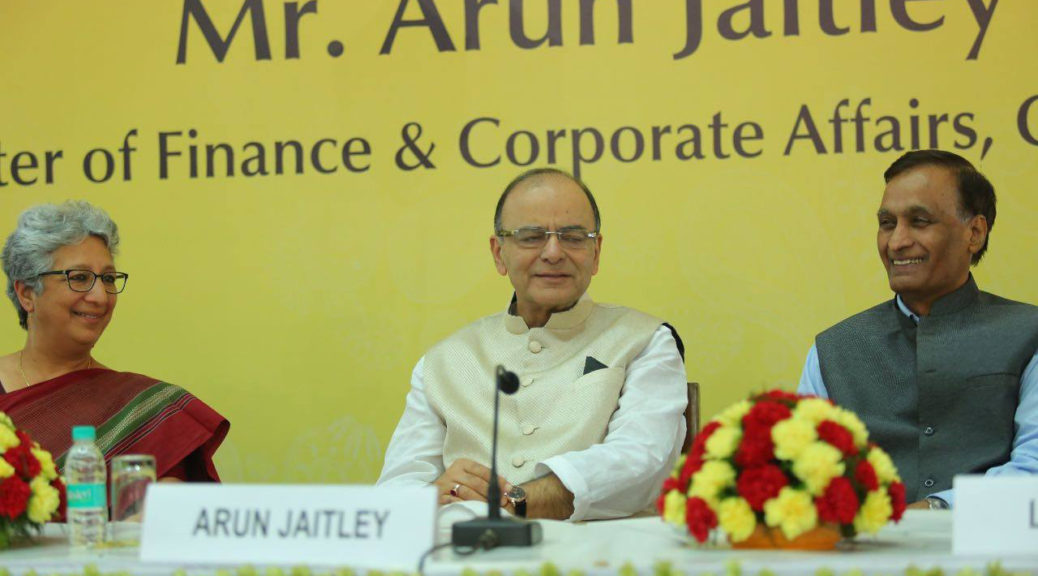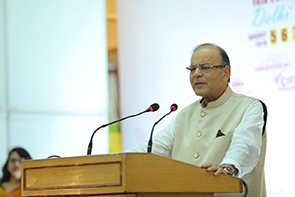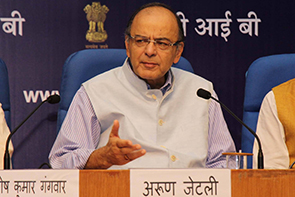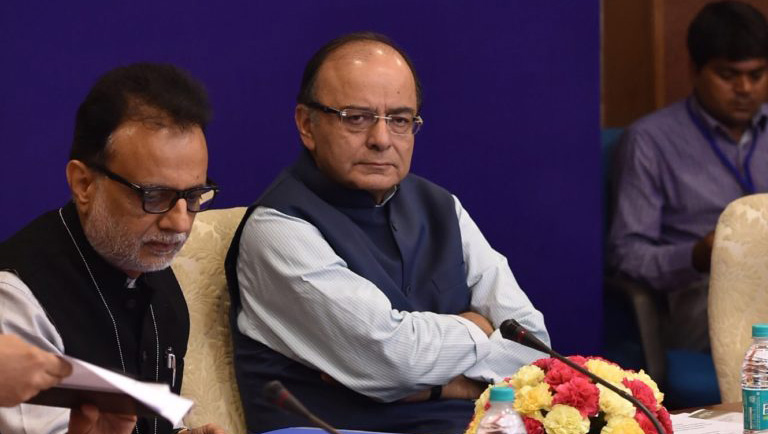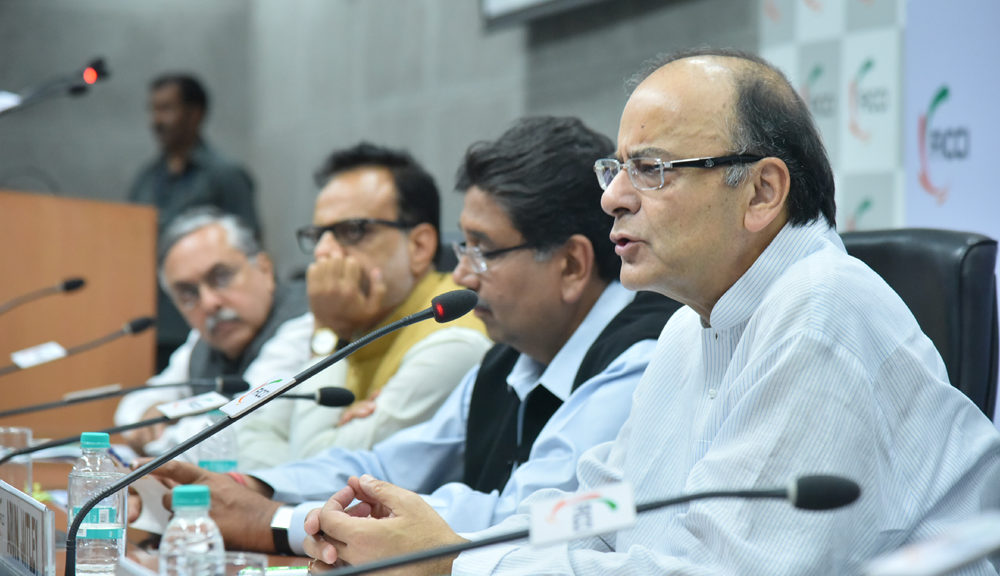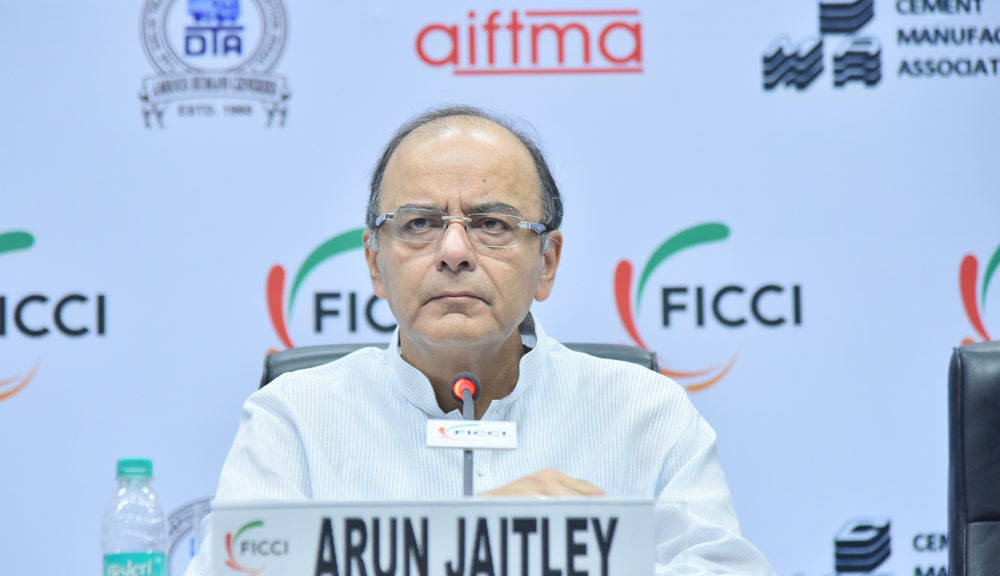All posts by admin
Posted on 23 February, 2017, No Comments Comments admin
The 2014 General Elections delivered an absolute majority for the BJP and overwhelming majority for the NDA. This was a surprise for many. The bigger surprise, however, was that the Congress got relegated to just 44 seats in Parliament.
Since May, 2014 India has seen many State and local elections. The BJP has increased its vote in each of these elections. It has done exceedingly well in States like Maharashtra, Haryana and Assam where it traditionally played a second fiddle to regional parties. The results of the local elections in Odisha and Maharashtra have shown that the BJP is capable of winning major States on its own. The first message of these elections is that BJP has become a pan-India party which is now fast spreading its roots even in the eastern and southern States. The forthcoming election for the Karnataka Assembly will reassert this.
But what about the Congress? In Odisha, it got squeezed out of the contest. In Maharashtra, it got pushed to third or fourth place in most cities. It is not even a major contestant in States like Tamil Nadu, West Bengal and Uttar Pradesh. It is struggling to survive by becoming the tail-ender in an alliance in these States. Many in the Samajwadi Party are wondering if it was worth leaving 103 seats for the Congress in Uttar Pradesh. Is the Congress willing for an introspection as to why this is happening? Having denied to the Congress the position of being the ruling party, the electorate is now well on its way to deny it a role even as a principal opposition. Once out of the power, the Congress refused to accept the reality. Its disruptive role in Parliament has projected it more as a fringe rather than a mainstream political party. It has failed to behave like a natural party of governance. It is seen as anti-reformist, anti-growth. Scandals of the 2004-2014 continue to tumble out.
The Congress Party’s stand on demonetization of high value currency is costing it dearly. Tax evasion enables a small percentage of the population to unjustly enrich itself at the cost of the exchequer. Public resources get reduced and hence the expenditure on the vast section of population is reduced. The poor have overwhelmingly supported the demonetization. The Congress Party has lost its traditional constituency of the poor electorate to the BJP. In any case, a Party which has governed India for more than half a century cannot afford to take a stand which supports excessive use of cash and ridicules the new tools of technology which will enable digital transactions to be a substitute for cash. The Congress has lost it’s image as a responsible political organisation. From a natural party of governance, it has moved to the fringe. It’s policies have alienated its constituency of the poor aam aadmi.
Parties which adopt dynastic succession as an alternative to merit-based leadership creation, suffer from a natural disadvantage. Tall leaders do not grow in such parties. The strength of the party overlaps with the charisma of the current generation of the dynasty. If the current representative of the dynasty lacks the ability to lead the Party or the country, the Party suffers. It becomes a crowd around a fading dynasty. This now seems obvious in the case of the Congress.
Posted on 07 January, 2017, No Comments Comments admin
Two months have passed since the Prime Minister announced the decision that high denominational currency notes would cease to be a legal tender. Subsequently those notes have been demonetised. When 86% of a country’s currency constituting 12.2% of its GDP, is squeezed out of the market and sought to be replaced by a new currency, there would obviously be significant consequences of that decision. Now that the queues outside the banks have disappeared and the remonetisation has moved ahead, it would be worthwhile to analyse the rationale behind the decision and its impact.
1. Steps against Black Money
The Narendra Modi Government had absolute clarity from day one that it would move against the shadow economy and black money. It’s first decision was to constitute SIT under the directions of the Supreme Court. The Prime Minister had proposed to the G-20 at Brisbane that international cooperation in sharing information with regard to base erosion and profit shifting should be expedited. The arrangement with the United States furthered this object. The NDA Government completed its agreement with Switzerland that w.e.f. 2019, details of assets held by Indian citizens in Switzerland and vice versa would be provided to each other. Since 1996, the Double Taxation Avoidance Treaty with Mauritius was being renegotiated. The treaty effectively incentivised round-tripping. It was renegotiated. Similar treaties with Cyprus and Singapore have also been renegotiated. The Black Money Law dealing with illegal assets outside India opened a window for disclosure with 60% tax and provides a ten year imprisonment.
The Income Declaration Scheme (IDS) 2016 was highly successful with a 45% tax. The PAN card requirement for cash transaction beyond rupees two lakhs put hurdles on expenditure through black money. The Benami law legislated in 1988 and never implemented. It was amended and has been put into action. The GST, which is scheduled to be implemented this year, will provide for better indirect tax administration and being a more efficient law will check tax evasion. The demonetisation of high denominational currency notes was the big step in the same direction.
2. The new normal
In the year 2015-16, 3.7 crore assesses of the total population of over 125 crores, filed income tax returns. Out of these, 99 lakhs declared income below Rs.2.5 lakhs and paid no taxes; 1.95 crores declared income less than Rs.5 lakhs; 52 lakhs declared income between Rs.5 to10 lakhs, and only 24 lakhs declared income above Rs.10 lakhs. No better evidence is required to substantiate that both in the matter of direct and indirect taxes India continues to suffer being a hugely tax non-compliant society.
Expenditure required for poverty eradication, national security and economic development have to be compromised with on account of tax non-compliances. For seven decades the Indian “normal” has been to undertake transactions partly in cash and partly in cheque. “Pucca” and “Kachha” accounts are a part of the business language. Tax evasion has been considered as neither unethical nor immoral. It was just a way of life. Several Governments have allowed this “normal” to continue even though this compromised with larger public interest. The Prime Minister’s decision is intended to create a new “normal”. It seeks to change the expenditure pattern of India and Indians. It is obviously disruptive. All reforms are disruptive. They change the retrograde status quo. The demonetisation puts a premium on honesty and penalises dishonest conduct.
3. The adverse consequences of Cash
Paper currency is a zero interest anonymous bearer bond. It has no name or history attached to it. Crime can take place with or without cash but excessive cash as a medium of exchange is favoured by the underground economy. It results in non-compliance in the matters of tax payments which creates an unjust enrichment in favour of the evader as against the poor and the deprived. Mountains of cash money reach tax havens through the hawala route from the original paper currency. Cash facilitates real time untraceable payments. Cash is the medium which funds bribery, corruption, counterfeit currency and terrorism. Ethical and developed societies aided by technology have consistently moved towards banking and digital transactions as against the excessive use of cash. Paper currency opens the doors for many vices. When Governments are able to collect more tax from tax evaders, they are in a better position to collect less tax from everyone else. Reducing cash may not eliminate crime and terrorism but it can inflict serious blow on them. States have shown that the stores of cash do not disappear on their own till Governments take active steps to reduce the quantum of paper currency.
4. The magnitude of the decision
The Prime Minister’s decision to replace the high denominational currency and eventually demonetise it required both courage and stamina. The implementation of the decision carried pain. It can lead to short term criticism and inconveniences. Drop in economic activity on account of the currency squeeze during the remonetisation period would have a transient impact on the economy. The decision involves high level of secrecy and printing substantial amounts of paper currency, distribution through banks, post offices, banking mitras and ATMs.
The fact that large quantum of high denominational currency has been deposited with the banks does not render this money to be legitimate cash. Black money does not change its colour merely because it is deposited in bank. On the contrary, it loses its anonymity and can now be identified with its owner. The Revenue Department would thus be entitled to tax this money. In any case, the amendment to the Income Tax Act itself provides that the said money, if voluntarily declared or if involuntarily detected, would be liable for differential and high rates of taxation and penalty.
5. The situation today
The period of pain and inconveniences is getting over. Economic activity is being restored. The banks today admittedly have a lot more money available in order to lend for growth. Since this money constitutes low cost deposits with the banks, it is bound to bring down the rate of interest. Both these things have already happened. Lakhs of crores, which were floating in the market as lose currency, have now entered the banking system. Not only has the money lost is anonymity, it’s owners, after being taxed, are entitled to put it to more effective uses. The size of the banking transactions and consequently the size of the economy is bound to increase. In the medium and long run, the GDP would be bigger and cleaner. Money entering into the banking system and officially transacted would give an ample scope for higher taxation – both direct and indirect. The Centre and the State Governments would both stand to gain. The economy would also be serviced by both cash and highly digitized transactions.
6. The Opposition
There was no social unrest while implementing such a major decision. All opinion polls conducted by independent media organizations have shown that an overwhelmingly large percentage of people have supported the Government’s decision. The opposition disrupted a full Session of Parliament. Their protests have been ineffective. Their exaggerated claims on the disruption of the economy have proved wrong. It is a tragedy that a national party like the Congress decided to adopt a political position, opposing both technology, change and reforms. It sided with black money friendly status quo.
7. The marked difference
There was a marked difference in the approach of the Prime Minister and his opponents. The Prime Minister was being futuristic, and thinking of a more modern, technology driven cleaner economy. He is now speaking of cleaning the political funding systems. His opponents want a cash dominated, cash generating and cash exchange system to continue. The difference between Prime Minister Narendra Modi and Rahul Gandhi was clear – the Prime Minister was thinking of the next generation while Rahul Gandhi was only looking at how to disrupt the next Session of Parliament.
Posted on 26 October, 2016, No Comments Comments admin
The GST Council comprising of the Finance Ministers’ of the Union and the State Governments has had three detailed meetings spread over several days. Two more meetings are proposed post Deepawali. The meetings have witnessed an intense debate on several issues, which has been an excellent example of ‘deliberative democracy’. Opposing viewpoints have ended up in convergence and so far all issues have been decided by a consensus. Some critical issues are pending before the GST Council for a final decision. Comments have been made in the public space with regard to two of these issues. Even though the final decision with regard to these two issues is yet to be taken by the GST Council, the rationale behind the proposals placed before the Council needs to be explained.
(1) The Multi Rate Structure
It has been proposed to the Council that there should be a four slab multi-rate tax structure. Items constituting nearly 50% of the weightage in the Consumer Price Index basket (mainly food items), are proposed to be exempted from the levy of the GST. There will be a zero tax on such items. The object of this is to ensure that the GST structure is not regressive or burdensome on the common man.
Of the balance items, a tax rate of 6%, 12%, 18% and 26% has been suggested. The principal rationale behind this tax structure is that items which are presently taxed at rates closer to the range of each of the slabs will be fitted into the particular rate of the slab. Those presently taxed below 3% as the total tax of the Centre and the States will be taxed at a zero rate. Those between 3-9% will be taxed at a 6% rate, those between 9-15% will be taxed at 12% and there would be a standard rate of 18%. Some have suggested that multiple tax rate is disadvantageous to the GST and would neutralise some of the advantages of a uniform tax structure. The reality is that a multiple tax rate in India is inevitable for several reasons.
Different items used by different segments of society have to be taxed differently. Otherwise the GST would be regressive. Air conditioners and hawai chappals cannot be taxed at the same rate. Total tax eventually collected has to be revenue neutral. The Government should not lose money necessary for expenditure nor make a windfall gain. The tax on some products in a narrow slab regime will substantially increase. This would be highly inflationary. A commodity being taxed by the Centre and the State at 11% at present will be taxed at 12%. If it’s taxation is suddenly raised on standard rate of 18%, it would disrupt the market and would be highly inflationary.
There are presently several items mainly used by the more affluent which are currently taxed at a VAT of 14.5% and an excise of 12.5%. If the cascading effect of these taxes and octroi is added, then range of taxation of these products is between 27-31%. It has been proposed to the Council to fix the rate of these items at 26%. Some of the items which are now being used by the lower middle classes will eventually be proposed to be shifted to the 18% bracket. With regard to demerit and luxury goods which are taxed globally at a higher rate, no rebates are contemplated. Each good would be taxed on the basis of its own demerit.
The gains of GST would necessarily involve that there would be a seamless transfer of goods and services across the country. The biggest advantage of GST actually lies in the GST design itself which provides for seamless transfer of input tax credit across the value chain. Most commodities would be taxed at lower than present levels. On some cases because of the tax rate going down and cascading of tax on tax going away, higher compliance levels which would reduce the level of non-compliance. The net gains of a more efficient tax would be felt over a longer period of time once the implementation glitches are all resolved. Hopefully with higher compliances and more revenue after the initial period, the GST Council would continue to have a look at the expenditure requirement and the tax likely to be collected and rationalise the tax rates and the structures in future.
It may be noted that some developed countries which do not have any section of the population below the poverty levels and where economic standards are high, have fewer tax slabs but many of them have 3-4 slabs. I am annexing to this blog an illustrative list of some of the countries which fall in this category.
(2) Compensation Payable Through Cess
The GST will result in the consuming States increasing their revenues from the very first year onwards. The GST Council has fixed a 14% revenue growth as a uniform, secular growth rate for all States. The revenue loss, if any, of a State has to be calculated on this basis. Some producing States may lose marginally in the initial years. The Constitutional amendment guarantees a five year compensation to these States. The moot question is as to how is this to be funded by the Central Government? If the Central Government has to borrow money to fund the compensation, it would add to its liability and increasing the cost of borrowing by the Centre, the State Governments and the private sector. There is no rationale for increasing direct tax for this purpose. Theoretically it has been argued that the compensation be funded out of an additional tax in the GST rather than by cess. Assuming that the compensation is Rs.50,000 crores for the first year, the total tax impact of funding the compensation through a tax would be abnormally high. A rupees 1.72 lakh crore of tax would have to be imposed for the Central Government to get Rs.50,000 crores in order to fund the compensation. 50% of the tax collected would go to the States as their GST share and of the balance 50% in the hands of the Central Government and 42% more would go to the States as devolution. So out of every 100 rupees collected in GST only 29% remains with the centre. The tax impact of this levy would be exorbitantly high and almost unbearable. The alternative proposal is to have a cess account and continue same existing levies as cess for a period of five years before subsuming them as tax. This would include clean energy cess and cesses on luxury items and tobacco products, which in any case, presently also pay levy higher than 26%. This would ensure no additional burden on the tax payer and yet be able to compensate the losing States. It may further be noticed that benefitting States are not compensating the losing states. The Centre, as a non-beneficiary, has to compensate and the proposal for continuing existing cesses for five years to the extent of compensation required is the more benign way of compensating the losing States without burdening the tax payer.
These are only at the proposal stage and would be discussed at length in the meeting of the GST Council early next month.
Annexure: http://bit.ly/2f6zmq8
Posted on 16 October, 2016, No Comments Comments admin
The issue with regard to the constitutional validity of ‘Triple Talaq’ is distinct from the Uniform Civil Code. The constitutional framers had expressed a hope in the Directive Principles of State Policy that the State would endeavour to have a Uniform Civil Law.
On more than one occasion, the Supreme Court has enquired from the Government its’ stand on the issue. Governments have repeatedly told both the Court and the Parliament that personal laws are ordinarily amended after detailed consultations with affected stakeholders.
On the issue of the Uniform Civil Code, the Law Commission has initiated an academic exercise once again. This academic exercise by the Law Commission is only a continuation of the debate in this country ever since Constituent Assembly had expressed the hope that the State would endeavour to have a Uniform Civil Code.
Irrespective of whether the Uniform Civil Code is today possible or otherwise, a pertinent question arises with regard to reforms within the personal laws of various communities. Pt. Jawaharlal Nehru’s Government had brought about major reforms to the Hindu Personal Laws through legislative changes. Dr. Manmohan Singh’s Government brought further legislative changes with regard to gender equality in the Hindu Undivided Family. Shri Atal Bihari Vajpayee’s Government, after active consultations with stakeholders, amended the provisions of marriage and divorce relating to the Christian community in order to bring about the gender equality. Reforming the personal laws, even if there is no uniformity, is an ongoing process. With passage of time, several provisions became obsolete, archaic and even got rusted. Governments, legislatures and communities have to respond to the need for a change.
As communities have progressed, there is a greater realisation with regard to gender equality. Additionally, all citizens, more particularly women, have a right to live with dignity. Should personal laws which impact the life of every citizen be in conformity with these constitutional values of equality and the Right to Live with Dignity? A conservative view found judicial support over six decades ago that personal laws could be inconsistent with personal guarantees. Today it may be difficult to sustain that proposition. The Government’s affidavit in the triple talaq case recognises this evolution.
There is a fundamental distinction between religious practices, rituals and civil rights. Religious functions associated with birth, adoption, succession, marriage, death, can all be conducted through rituals and customs as per existing religious practices. Should rights emanating from birth, adoption, succession, marriage, divorce etc. be guided by religion or by constitutional guarantees? Can there be inequality or compromise with human dignity in any of these matters? Some people may hold a conservative, if not obsolete, view that personal laws need not be constitutionally compliant. The Government’s view is clear. Personal laws have to be constitutionally compliant and the institution of Triple Talaq, therefore, will have to be judged on the yardstick of equality and the Right to Live with Dignity. Needless to say that the same yardstick would be applicable to all other personal laws.
As of today, the issue before the Supreme Court is only with regard to the constitutional validity of triple talaq. Governments in the past have shied from taking a categorical stand that personal laws must comply with Fundamental Rights. The present Government has taken a clear position. The academic debate with regard to the Uniform Civil Code can go on before the Law Commission. The question to be answered is that assuming that each community has its separate personal law, should not those personal laws be constitutionally compliant?
Posted on 08 July, 2016, No Comments Comments admin
The Congress party has run out of ideas. It has perfected the art of scoring self-goals. The latest example is the Press Conference that its Spokesperson held on 7th July 2016 alleging a telecom scam of Rs.46,000 crores.
Under the well established policy of Government of India, telecom service providers pay to the Government of India license fee and spectrum user charges on a revenue sharing basis. A CAG Report of February 2016 has stated that the six telephone providers, between the period 2006-07 to 2009-10, have under reported their revenues to the extent of Rs.46,000 crores, thereby depleting the share of the Union Government in license fee and spectrum user charges by about Rs.5000 Crores. The CAG Report was received by the Telecom Department in February this year and its supporting documents were received in June 2016 and the same are now being scrutinized so that the Telecom Department can take further action in the matter. As per Parliamentary procedure, the CAG Report is now pending before the Public Accounts Committee.
The pertinent question is how is this a scam of the NDA Government? The under reporting by the telecom service providers relates to the period when UPA was in power. The UPA Government, under its very nose, allowed this under reporting. The Final CAG report pointed it out in February 2016 and only 3 weeks ago have the documents been sent by the CAG to the Telecom Department. Notwithstanding the fact that the issue is pending before the PAC, the Telecom Department, which is processing these documents, will take action. What is act of omission and commission by the present Government? An impropriety took place during the UPA Government for which the present Government will take action.
The question, however, is the pathetic plight of the Congress party. Notwithstanding the fact that this impropriety took place during the UPA Government, the Congress Spokesman made an empty noise about this being an NDA Telecom Scam. Shrillness, non-application of mind and a belligerent rhetoric seem to be the strategy of the Congress party. It is a pity that the Party has been pushed to this desperation.
Posted on 25 June, 2016, No Comments Comments admin
FORTY One Years ago, on this very day Prime Minister INDIRA GANDHI imposed an internal emergency in the country. The phoney reason she gave was that there was a breakdown of public order in as much as Jai Prakash Narain had asked the Police and the Army not to follow illegal orders. The actual reason was that her continuation as the Prime Minister was threatened since the Allahabad High Court had unseated her as Member of Parliament for adopting corrupt practices during her election.
The impact of the Emergency was to inflict a dictatorship on the country. All political opponents were detained. The authority of the Courts to hear a challenge against the detentions was suspended. The Supreme Court caved in before the dictator. The Press was subjected to pre-censorship. The Press became a spokesperson of the dictator. No Public protest was allowed. The Parliament was without an opposition. By projecting her son Sanjay as her successor, the dictator converted India into a dynastic regime. Inner party democracy was throttled. The Parliament without an opposition amended the Constitution in order to legitimize a Constitutional dictatorship. Only Political workers offered some resistance by courting arrest and going to Jail. Politicians were the only Institution that fought the emergency since they were the only accountable section of society. The standards of accountability of the political class are high. Even the dictator had to face an electorate when faced with International and National opinion pressures. The collapse of the Media and the Supreme Court before the dictatorship was most significant.
If one looks back at the history of the Congress Party after independence , the blots on it are economic reforms being delayed by over two decades, transformation of India in to a dynastic democracy, the imposition of Emergency in 1975, Operation Blue Star and Corruption. I wonder whether the current leadership of the Congress Party has a view on this subject. Will the Congress Party have an internal debate on these issues?
Posted on 23 June, 2016, No Comments Comments admin
We have just seen the final vote of the people of the United Kingdom in the referendum on whether to remain or leave the European Union. We respect the referendum’s verdict. At the same time, we are also aware of its significance in the days ahead and also for the medium term.
As I have often said, in this globalized world, volatility and uncertainty are the new norms. This verdict will, obviously, further contribute to such volatility not least because its full implications for the UK, Europe and the rest of the world are still uncertain. All countries around the world will have to brace themselves for a period of possible turbulence while being watchful about, and alert to, the referendum’s medium term impacts.
As regards, the Indian economy, we are well prepared to deal with the short and medium term consequences of Brexit. We are strongly committed to our macro-economic framework with its focus on maintaining stability. Our macro-economic fundamentals are sound with a very comfortable external position, a rock-solid commitment to fiscal discipline, and declining inflation. Our immediate and medium-term firewalls are solid too in the form of a healthy reserve position.
As investors look around the world for safe havens in these turbulent times, India stands out both in terms of stability and of growth. India, as you are all well aware, is amongst the fastest growing major economies in the world today. Our growth and inflation prospects are further improving in the wake of the good monsoons that are now moving well across India.
The government and the Reserve Bank of India as well as other regulators are well prepared, and working closely together, to deal with any short term volatility. Our aim will be to smooth this volatility and minimize its impact on the economy in the short term. At the same time, for the medium term, we will steadfastly pursue our ambitious reform agenda—including early passage of the GST—that will help us realize our medium term growth potential of 8-9% and help achieve our objective of development for all.
Posted on 20 May, 2016, No Comments Comments admin
The results of the five State Assemblies which went to poll in the last two months are on expected lines.
The most important political analysis emerging from the results is a significant setback to the Congress party. It lost both the States of Kerala and Assam. In Kerala, it lost because its government was mired in corruption scams. In Assam, its traditional policy of encouraging illegal immigration as a source of vote bank invited a popular wrath. The strategic alliance between the BJP, AGP and the BPF highlighted this historical blunder of the Congress. In Tamil Nadu, it was a laggard in the DMK-Congress alliance. Its poor strike rate pulled the DMK alliance down. In West Bengal, the alliance with the Left was an ideological compromise. It proved counter-productive. Post 2014 General Elections, the Congress has increasingly adopted fringe positions. It didn’t behave as a natural party of governance. Its obstructionism was blended with its leader’s “rent a cause” approach. The Congress is, today, threatened with being pushed increasingly to the margins. Will it be the main challenger to the BJP led NDA in 2019, or will it stand behind a hotchpotch combination of ideologically disparate regional groups? What is the nature of ‘surgery’ the party leaders are now talking about? Will the Congress evolve into a structured party with a galaxy of leaders or will it remain a dynastic party?
For the BJP, this election marks a significant geographical expansion. There were not many takers in 2008 for the idea that BJP can form its own government in Karnataka. Karnataka was then seen as a gateway to the South. We are now on a come-back trail in Karnataka. We have since, a coalition government in Andhra Pradesh and are increasingly pushing the politics of Kerala to a tri-polar position. We are unquestionably the largest party in Bihar. In our Eastward movement, we will now form a government with a comfortable majority in Assam. We are already a part of the two coalition governments in the North East and have made a sizeable seat and vote presence in West Bengal. We seek to work in cooperation with the Governments of the regional parties.
The Left has ideologically become irrelevant globally. The political and economic models that they espoused have been widely rejected. In India, it is their battle for an ideological survival. Their victory in Kerala is the result of an unpopular government losing an election and an opponent winning by default. Their marginalization in West Bengal, a State they ruled for 34 years, is significant. Extreme positions espoused by a few in the Universities of Jadhavpur and JNU cannot be a mainstream agenda of India.
For us in the Central Government it will be an opportunity to work closely with all the five elected State Governments for the larger welfare of the people.
Posted on 28 March, 2016, No Comments Comments admin
President’s Rule has been imposed in the State of Uttarakhand. Article 356 of the Constitution can be invoked only if the President is satisfied that there are grounds for believing that the governance of the State cannot be carried on in accordance with the Constitution.
The Congress party in the State of Uttarakhand split after a section of the leadership alleged that they were dis-satisfied both with the Chief Minister and the central leadership of the Congress party. The split was on account of reasons internal to the Congress party. Nine Members of the Congress party in the Legislative Assembly decided to vote against the Appropriation Bill which provides for the budget of the State. On 18th March 2016, it appears that 35 Members voted against the Appropriation Bill and 32 in favour. These 35 Members comprised of 27 from the BJP and 9 rebel Congress men. There is documentary evidence both prior and subsequent to the Assembly Session to suggest that these 35 Members asked for a Division of Votes. The proceedings of the Assembly circulated in writing establishes the charge that a Division was asked for and yet it was claimed that the Appropriation Bill has been passed without a vote.
There are strong facts to suggest that the Appropriation Bill was actually defeated. As a consequence, the Government had to resign. Two further consequences flow out of this. Firstly, the Appropriation Bill sanctioning expenditure from 1st April 2016 was not approved and, secondly, if the Appropriation Bill was defeated, the continuation of the Government subsequent to 18th March 2016 is unconstitutional. It is to be noted that till today, neither the Chief Minister nor the Speaker have forwarded a certified copy of the Appropriation Bill to the Governor. Obviously, there is no assent of the Governor to the Appropriation Bill.
In any case, all facts surrounding the alleged discussion and passage of the Appropriation Bill clearly indicate its non-passage. There is a cloud and a serious doubt about the Appropriation Bill. There is a complete breakdown of the Constitutional machinery in as much as the Government, which should have resigned on the 18th of March with the failure of Appropriation Bill, has decided to continue. As of today there is no Appropriation Bill certified by the Speaker which has received assent of the Governor. If it is Speaker’s case that the rebels voted in favour of the Appropriation Bill and, hence, it has been passed, then the rebels could not have been disqualified.
Having plunged the State into a serious Constitutional crisis by continuing a Government which should have quit after the failure of the Appropriation Bill, and further complicating the crisis the Chief Minister started allurement, horse-trading and disqualification with a view to altering the composition of the House. After the Assembly has been put under suspended animation and the decision has been made public, the Speaker has decided to disqualify some Members. The Constitutional breakdown has been compounded further by this action. On 18th March the majority was declared to be a minority and vice versa, and on 27th March the composition of the House was attempted to be changed in violation of the Constitution to convert a minority into a majority. This is an unprecedented case of a Speaker declaring a failed Appropriation Bill as passed and then failing to certify falsehood. This leaves the State without any approved financial expenditure with effect from 1st April 2016. What better evidence do we need of a breakdown of Constitution? The Congress Government of Uttarakhand was murdering democracy every day from the 18th of March till the 27th of March. It is now incumbent upon the Central Government to ensure that steps are taken under Article 357 to authorise expenditure of the State with effect from 1st April 2016.
Posted on 18 March, 2016, No Comments Comments admin
The Aadhaar (Targeted Delivery of Financial, Other Subsidies, Benefits & Services) Bill 2016 came up for consideration before the Rajya Sabha on 16th March 2016. Consistent with the spirit of democratic debate, the Congress in the Rajya Sabha suggested five amendments to the Bill, which were not accepted by the Lok Sabha. This blog explains why? (The Bill has now got Parliamentary approval).
Let us try to understand the potential ramifications if those five amendments had been accepted by Lok Sabha. There has understandably been an extensive public debate on the need for the Unique Identity Number for each resident and the desirability of not compromising with the Right to Privacy. The 2010 Bill drafted by the UPA had provisions in chapter VI which led to this debate. The Bill provided for sharing of identity information with the consent of the Aadhaar number holder, or by an order of any court, or a Competent Authority, disclosing the information on the grounds of “National Security”. The draft Bill was criticized for making provisions which could compromise an individual’s Right to Privacy.
I have always strongly believed that, notwithstanding the jurisprudential debate on the Right to Privacy, it would be essential to recognize that, Privacy, is an essential aspect of personal liberty guaranteed by Article 21 of the Constitution. The denial of privacy must thus be based on procedure which should be fair, just and reasonable. The 2016 law, therefore, contained stringent provisions both substantially and procedurally with regard to the Right of Privacy. The core bio-metric information cannot be shared with any person even with the consent of the Aadhaar card holder. The information cannot be unlawfully shared. Instead of permitting any Court to direct production of any such information, only a Court of the District Judge or above has been given the power to order disclosure of information excluding core biometrics. “National Security” is the only ground on which a Competent Authority can share this information. Every decision of the Competent Authority has to be reviewed by a Committee comprising of the Cabinet Secretary, the Law Secretary and the Secretary, Information Technology before it is given effect. The period of the direction of this Competent Authority has been limited to a maximum of three months.
The ground of “National Security” as the only ground on which the Competent Authority can share information is common to both the 2010 and 2016 laws. National Security is a well defined concept. The phrase exists in several legislations and also finds indirect reference in the Constitution in Article 19(2). National security has always been held to be an exception on account of larger public interest, wherein individual’s rights give way to larger public interest. This principle is followed in most advanced liberal democracies. For example, in United Kingdom, Section 28 of Personal Data Protection Act, 1998 provides that personal data are exempt from the data protection principles on grounds of safeguarding National Security. The Congress, using its superior numbers in the Rajya Sabha, forced an amendment to replace the words “National Security” with the words “Public Emergency or in the interest of public safety”. None of these two phrases are well defined. They are vague and can be elastic. It is also not clear as to how Aadhaar information would have been used in dealing with situations of public emergency or public safety. Certainly, they would have provided a scope much wider for encroaching upon privacy than the words “National Security” which existed in both the 2010 and 2016 law, and would have potentially become the grounds for constitutional challenge at a later date.
The proposed another amendment that the Oversight Committee to review the Competent Authority’s decision should also comprise of either the “Central Vigilance Commissioner (CVC) or the Comptroller and Auditor General (CAG)”. One is an anti-corruption authority and the other audits the government’s accounts. Both have no nexus whatsoever with the issues of “National Security”.
They, further, proposed to delete Section 57 of the 2016 law. Section 57 merely says that if under any other law the use of Aadhaar number for establishing the identity of an individual is permitted, the same law is not being over-ruled. The proposed amendment wanted all future laws to be over-ruled. Had a Money Bill started over-ruling future unknown legislations, it would have ceased to be a Money Bill.
Had the amendments proposed in the Rajya Sabha had been accepted, the encroachment to the Right of Privacy would be much wider. The Oversight Committee, on issues of national security, would have consisted of either an auditor or an anti-corruption authority, and the Money Bill would have gone beyond the scope of the Money Bill. These lacunae would have pushed the Aadhaar law to the realm of unconstitutionality. Obviously, the Lok Sabha did not agree with the above suggestions, and in my view, rightly so.

